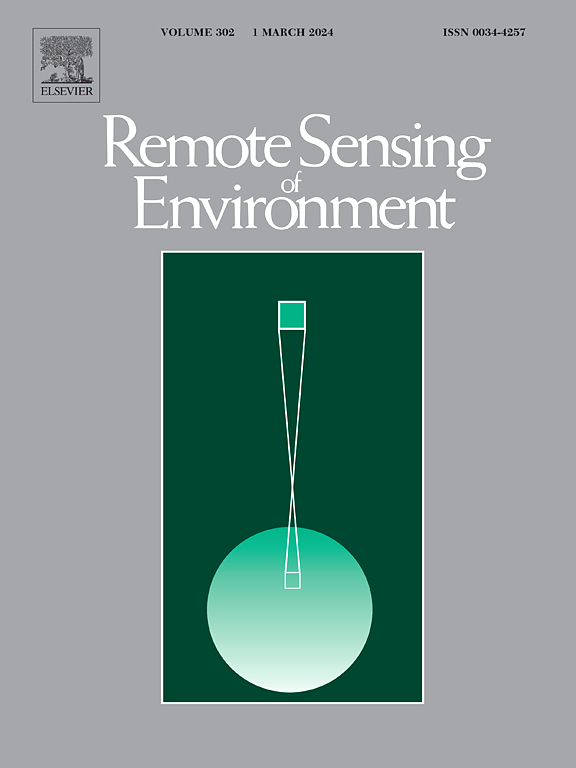A novel strategy of full-waveform light detection and ranging bathymetry based on spatial gram angle difference field conversion and deep-learning network architecture
IF 11.1
1区 地球科学
Q1 ENVIRONMENTAL SCIENCES
引用次数: 0
Abstract
The airborne light detection and ranging (LiDAR) bathymetry (ALB) system is a promising and effective approach for surveying nearshore bathymetry and underwater terrain. Deep-learning techniques have been developed to reduce waveform superposition in shallow and deep areas. These methods avoid the complex transmission process of laser pulses in the water column and the intricate determination of various parameters and thresholds in traditional ALB methods. However, studies on ALB bathymetry using deep-learning techniques remain insufficient. To improve the accuracy and reliability of nearshore bathymetry, this study proposes deep-learning bathymetry fusing waveform features and spatial-angular field features (DBWSF). This method utilizes the waveform curvature to construct an energy curve, enhancing the waveform's features. Additionally, it employs a Gram angle difference field to convert the temporal waveform into a two-dimensional Gram angle difference field image, increasing the dimensions and quantity of waveform features. Finally, this method constructs a dual-path neural network with an attention mechanism to extract the water surface and bottom waveform signals precisely to achieve nearshore bathymetry. In comparison to sample data, DBWSF exhibited high bathymetric accuracy across three study areas (Ganquan Island, Lingyang Reef, and Dong Island), achieving a root mean squared error of 0.21 m. The R2 in these regions were 99.6 %, 95.1 %, and 99.8 %, respectively. In the above three study areas, compared with the bathymetric results obtained using the waveform decomposition method, DBWSF was more accurate, with improvements in RMSE of 0.33, 0.27, and 0.04 m. Compared with multilayer perceptron (MLP), the corresponding accurate improvements in RMSE with DBWSF were 0.47, 0.40, and 0.25 m. Compared with other two methods, the R2 value for DBWSF in the three study areas exceeded 95 % and reached a highest value of 99.8 %. The results demonstrated the bathymetric capability, reliability, and transferability of DBWSF for determining nearshore bathymetry in different water environments. The novel LiDAR bathymetric deep-learning technique can effectively and intelligently produce precise nearshore bathymetry and seafloor topography maps.
求助全文
约1分钟内获得全文
求助全文
来源期刊

Remote Sensing of Environment
环境科学-成像科学与照相技术
CiteScore
25.10
自引率
8.90%
发文量
455
审稿时长
53 days
期刊介绍:
Remote Sensing of Environment (RSE) serves the Earth observation community by disseminating results on the theory, science, applications, and technology that contribute to advancing the field of remote sensing. With a thoroughly interdisciplinary approach, RSE encompasses terrestrial, oceanic, and atmospheric sensing.
The journal emphasizes biophysical and quantitative approaches to remote sensing at local to global scales, covering a diverse range of applications and techniques.
RSE serves as a vital platform for the exchange of knowledge and advancements in the dynamic field of remote sensing.
 求助内容:
求助内容: 应助结果提醒方式:
应助结果提醒方式:


